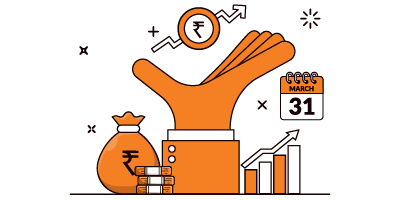What is the difference between annual rate and annual yield?
Annual yield is the earnings from an investment over a specified period of time. The yield includes investor’s earnings, such as dividends and interest received for holding an investment. In other words, the yield is the annual profit that an investor gets for an investment.
On the other hand, the annual rate is a certain percentage the investor receives for their investments. The annual rate is also the interest an investor can expect from a debt instrument such as a certificate of deposit or bond. For a loan, the annual rate is the percentage of principle that a lender charges annually till the loan is completely repaid. In debt securities, the interest rate is also known as the coupon rate.
Ultimately, the annual rate is represented in the yield.
In stocks, the yield is the return in dividends for those who hold the shares. Yield is not the profit from the sale of shares. The dividend is the investor’s share in the company’s quarterly profit.
In bonds, the yield is referred to as yield-to-maturity (YTM). YTM is the total return that the bondholder can expect at the time of maturity. In this case, the yield is the interest rate that the bond issuer agrees to pay.
Is monthly interest better than annual?
Annual interest is higher than the monthly interest. It is due to compounding. In other words, instead of making monthly payments, the principal amount has twelve months to grow. But, if the investment offers the same rate of interest for monthly payments, then one might opt for monthly payments.
Monthly interest payouts are a good source of additional income. During retirement, monthly income from investments will be an added advantage to the pension one receives. With a monthly source of income, one can retire peacefully.
Also, most individuals prefer monthly income. Even though the rate is lower. This is because it provides some cash in hand and also helps during uncertainties.
Therefore, monthly interest or annual, it is totally a personal financial decision. If one doesn’t require a monthly source of income from their investments, then they can choose for annual payouts. Similarly, if one requires some cash in hand every month, then monthly payouts are the best option. This steady income stream will help is meeting the expenses at ease.
What is semi annual compounding?
Semi annual compounding means that the investment amount gets compounded every six months. Compounding is a very powerful concept because it earns interest on interest. The value of the investment grows at a geometric rate rather than arithmetic rate. Furthermore, compound interest has the power to boost investment returns over the long term significantly.
The number of compounding periods also make a significant difference while calculating compound interest. The higher the number of compounding intervals, the greater is the amount of compound interest.,
While compounding, the interest from the previous period is added to the principal to compute the interest. Compounding ranges from daily to annually. For semi annual compounding, the compounding is done twice a year.
For example, for a five year investment with semi annual compounding. It is important to note that compounding is a long term concept.
To calculate compound interest one can use the formula,
P [((1 + i)^n) – 1], where
P is the principal,
I is the annual interest,
n is the number of periods
Computing the compound interest manually is very tedious. One can use Scripbox’s Power of Compounding calculator to determine the interest amount.
READ MORE
- How to Calculate Yield to Maturity
- What is expense ratio
- What are stocks
- What is annual return
- What are different types of investment
- What are Momentum Indicators?
- FDI vs FPI
Is yield to maturity the same as interest rate?
Yield to maturity and interest rate isn’t the same. YTM of a bond is the total return that the bondholder may receive upon maturity. The yield depends on the interest rate that the bond issuer agrees to pay.
Yield is the total of all the cash flows from an investment over a period of time. It considers all interest or dividends received from the investment during the term of the investment. Yield to maturity (YTM) is the total expected return from a bond if the investor holds it to maturity. YTM factors in all the present values of the future cash flows from an investment. This equals the current market price. However, YTM is based on the assumption that all the proceeds are reinvested back at a constant rate. And also, that the investor holds the investment until maturity.
Interest rate is a common term that is used in debt securities. It is the percentage that the lender charges until the loan is repaid. For bonds, the interest rate is the coupon rate. It is the rate of return on the bond that the issuers of the bond pay to the investors. Coupon payments are made semi annually or annually.
Also, bond yields can fluctuate with the change in bond prices. In a rising interest rate scenario, the bond prices may fall. The coupon payments become unattractive to the investors. Investors can sell the existing bond with a low coupon rate and invest in another bond with a high coupon rate. In a falling interest rate scenario, the bond prices can increase. This impacts the bond yield to fall. It is because the investor would want to gain from the price increase and sell the bond. Ultimately, leading to lower yields from bonds.
























Show comments